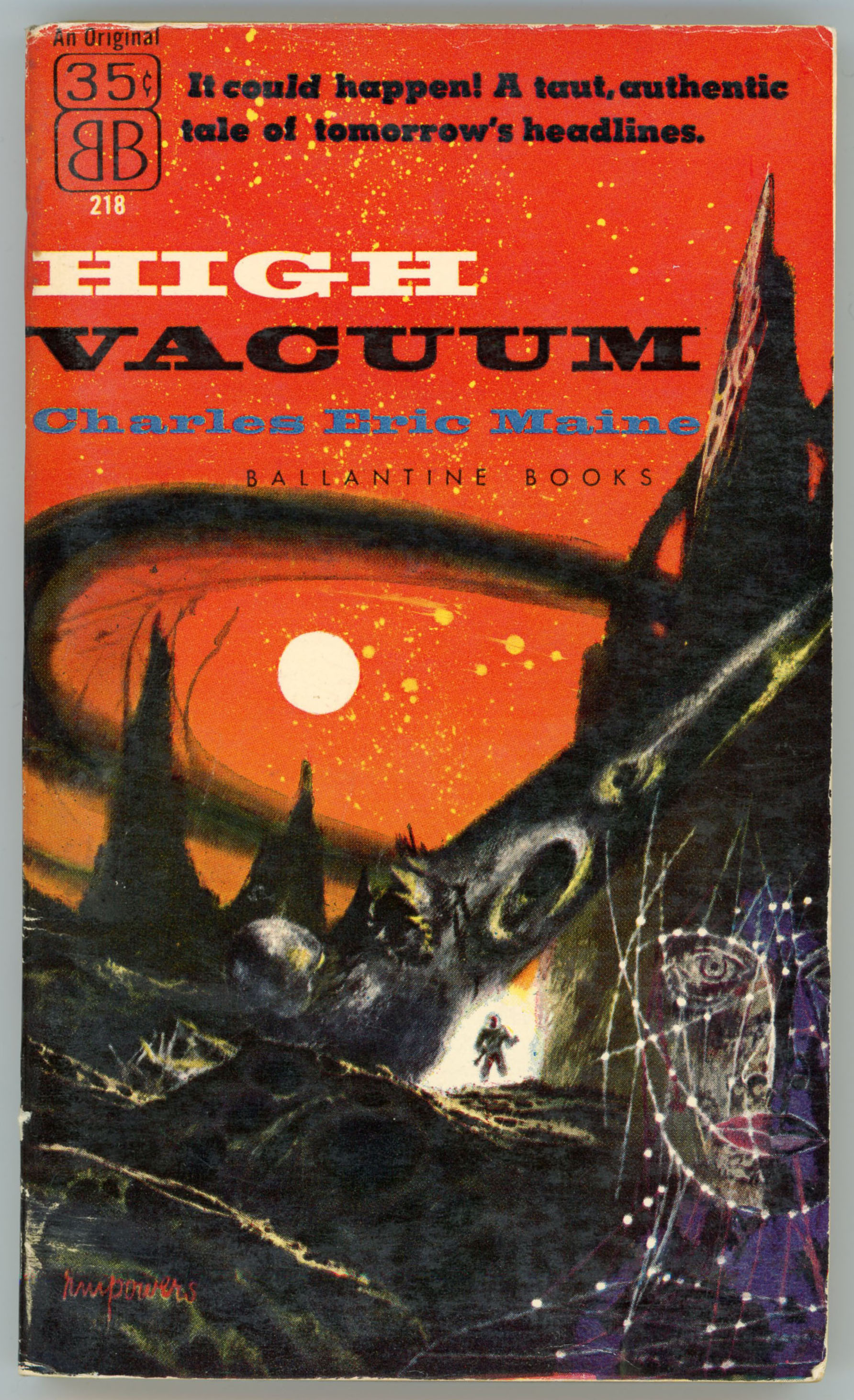A straightforward example of Richard Powers’ late 1950s science fiction cover art….
With colors ranging from white, to bright orange, to dark greenish gray, to black, the cover shows the surface of the moon in (highly) imaginary, (very) exaggerated, (strongly) symbolic fashion: There are neither craters nor chain-like walls of jagged-peaked mountains, nor flat plains of dust, but spires projecting from an irregular foreground. A woman’s face, formed from a lined pattern of dots, is at lower right. Near the center is the only conventional element in the painting: The diminutive figure of an astronaut in a dark spacesuit, only visible because he’s backlit by a background glowing white.
Regardless of the cover’s originality, the novel itself – having gone through nine printings since 1957, the latest having been in 2021, is fairly straightforward and conventional. As described by Andrew Darlington [spoiler alert!], “1956 – ‘High Vacuum’ (Hodder & Stoughton, 12/6d, 192pp, Corgi, 1959, USA Ballantine), the ‘Operational Programme’ of the ‘Ministry of Astronautics’ undertakes the first lunar landing in Moonship Alpha. Three of the four crewmen survive the initial wreck, plus the female stowaway, the second, Russian ship is sabotaged, Kenneth F Slater says ‘although there is a survivor, there is not a ‘happy ending’ to the story. It is all the more realistic for that’ (‘Nebula’ no.25, October 1957). Leslie Flood adds ‘the story collapses into formula melodrama’ until ‘a dream glimpse into the future of the moon-base involving the stowaway’s spaceman son – immediately belied by the child being stillborn’ (‘New Worlds’ no.66, December 1957).”
So, it seems that the novel is primarily plot and character driven, rather than being founded in hard SF.
SURVIVAL…
“Vacuum is the first and last enemy of the astronaut. In space, vacuum is normal. In space, therefore, air is abnormal, and life forms depending on air for survival in space are in abnormal state. The establishment and maintenance of the abnormal is therefore the beginning and the end of interplanetary flight.”
The Handbook of the
Ministry of Astronautics
Charles Eric Maine, author of The Timeliner and The Isotope Man, writes a tale of a grim race with time. The Alpha rocket is the first manned expedition from Earth to get to the Moon. It makes a crash-landing, and facilities for “the maintenance of the abnormal” are sharply cut. There is enough oxygen to support the four survivors for five weeks – or two for ten, or one for twenty…
Nerve-wracking because it is so matter-of-fact, this is a high tension story of ordinary men in an extraordinary situation, of decisions quietly made that are literally of life and death importance, and, in the end, of the naked determination of the human will to survive – at any cost.
Otherwise…
High Vacuum, at…
… Internet Speculative Fiction Database
Charles Eric Maine (David McIlwain), at…
… Internet Speculative Fiction Database
… The Encyclopedia of Science Fiction
… Andrew Darlington Blogspot (Includes reviews, biography. and filmography. (Indeed, a filmography.))


